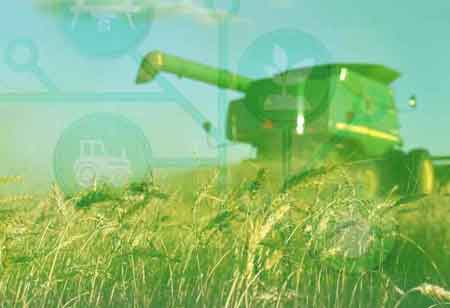Thank you for Subscribing to Agri Business Review Weekly Brief
AgTech Solutions to Boost Farm Efficiency
Few businesses in modern society confront the number of obstacles that agriculture does. Many external influences harm a farm company, and all are outside the business owner's control.

By
Agri Business Review | Monday, May 29, 2023
Stay ahead of the industry with exclusive feature stories on the top companies, expert insights and the latest news delivered straight to your inbox. Subscribe today.
Several labor-intensive jobs in agriculture can be automated with the current generation of automated technology.
FREMONT, CA: Few businesses in modern society confront the number of obstacles that agriculture does. Many external influences harm a farm company, and all are outside the business owner's control. The weather, droughts, pests, and diseases are all ongoing threats to agriculture. They add to any organization's usual risks, putting severe pressure on traditionally tight profit margins. Add to this the present labor-force stagnation, exacerbated by the COVID-19 epidemic, and you have an array of seemingly insurmountable issues.
A farmer plants many seeds and has to generate a certain number of crops to make the business profitable. We must determine how to increase efficiency to produce more yield from the same amount of land. This is analogous to a factory attempting to create more pieces on the same production line.
Efficient: The United States Department of Agriculture (USDA) recognized in 2018 that it required a mechanism to assist the food supply chain in addressing these difficulties using technologies employed in many other industries. Its response was the Agriculture Improvement Act, which permitted money for research and education while selecting high-priority areas and providing funds to create technology, tools, and products via long-term and high-risk research on food and agricultural concerns. The legislation included explicit wording to promote mechanization and automation of agricultural jobs, and the government put up enough money to get things started.
Accuracy: The farm tractor is a well-known type of machinery used to complete various duties that often demand a driver to spend upwards of eight hours traversing acres of land. On the other hand, several tractor businesses are developing completely autonomous driverless systems intending to revolutionize farming. It all depends on guidance, which assures row-to-row precision year after year, lowering costs and increasing yields. The next stage is coordination and optimization, which combines data such as satellite imaging, soil sampling maps, and in-field travel plans into a single software that any suitable system can access. The third layer begins to tilt toward autonomous operation, in which the tractor will follow a course while the operator concentrates on the implementation behind the tractor. The next phase is supervised autonomy, where the operator remains outside the car but monitors it via a necklace. These systems use GPS tracking to maintain course precision and sensors to avoid obstructions. The next layer is full autonomy, in which the machine functions autonomously with supervision from a person in the farm office or using artificial intelligence. Most agricultural concerns encompass vast land areas, making the present generation of drone technology ideal for various labor-intensive tasks. DJI, a drone manufacturer, saw this possibility in 2015 and established a new farm branch to develop and produce drones exclusively for agricultural activities. Consequently, some agriculture companies now have a portfolio of drones. Each aimed toward a certain farm activity.





